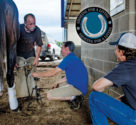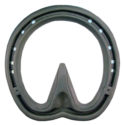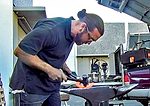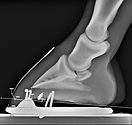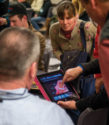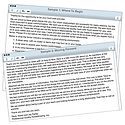Advertise Follow Us
American Farriers Journal
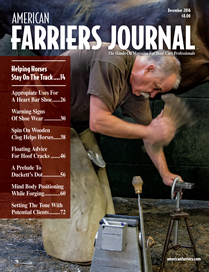
View Archived Issues
December 2016
Volume: 42
Edition: 8
American Farriers Journal is the “hands-on” magazine for professional farriers, equine veterinarians and horse care product and service buyers.
-
Table Of Contents
Table Of Contents
Successful Track Shoeing Requires a Strong Start Out of the Gate
To take care of the needs of track Thoroughbreds, Kentucky farrier Steve Norman relies on knowledge, skill and a team of horseshoersRead MoreWarning Signs Of Shoe Wear
Paying attention to unusual patterns or changes in this area can help you head off potentially serious soreness issuesRead MoreThe Ideal Hoof Angle Depends On The Horse
No single number should dictate how all horses are trimmedRead MoreNew Spin On The Steward Clog Keeps Horses Working
The Klimmick shoe has helped horses with therapeutic needs continue to work in various disciplinesRead MoreDoes Grooving Benefit Quarter Cracks?
Hall Of Fame farrier Bob Pethick challenges its effects on heel displacementRead MoreMeasurement Of The Hoof-Pastern Axis For Foot Management
The benefit of this system in the consistency and measurability of the hoof-pastern axisRead MoreA Prelude To Understanding Duckett’s Dot
Hall Of Famer Dave Duckett stresses to attendees at the Northeast Association of Equine Practitioners meeting to focus on the science that gives practitioners a common language to work fromRead MoreBody Position is Critical to Better Forging
Consistent stance and arm control will improve your accuracy and efficiency at the anvilRead MoreConsiderations For Negative Plantar Angles
Farriers and veterinarians share thoughts on the diagnosis and treatment of this conditionRead MoreDigital Options To Improve Your Practice
Farriers offer advice on using technology to expand knowledge for both you and your clientsRead MoreSet the Tone with Clients Before They Join Your Practice
Hall Of Fame farrier Dave Farley relies on an interview and correspondence to find the right clients for his multi-farrier practiceRead MoreResearch Journal: December 2016
The information, ideas and opinions expressed are those of the author and do not necessarily represent those of the United States Department of Agriculture.Read More -
Featured Articles
Featured Articles
Successful Track Shoeing Requires a Strong Start Out of the Gate
To take care of the needs of track Thoroughbreds, Kentucky farrier Steve Norman relies on knowledge, skill and a team of horseshoersRead MoreDoes Grooving Benefit Quarter Cracks?
Hall Of Fame farrier Bob Pethick challenges its effects on heel displacementRead MoreNew Spin On The Steward Clog Keeps Horses Working
The Klimmick shoe has helped horses with therapeutic needs continue to work in various disciplinesRead More - Digital Edition
-
Online Extras
Online Extras

